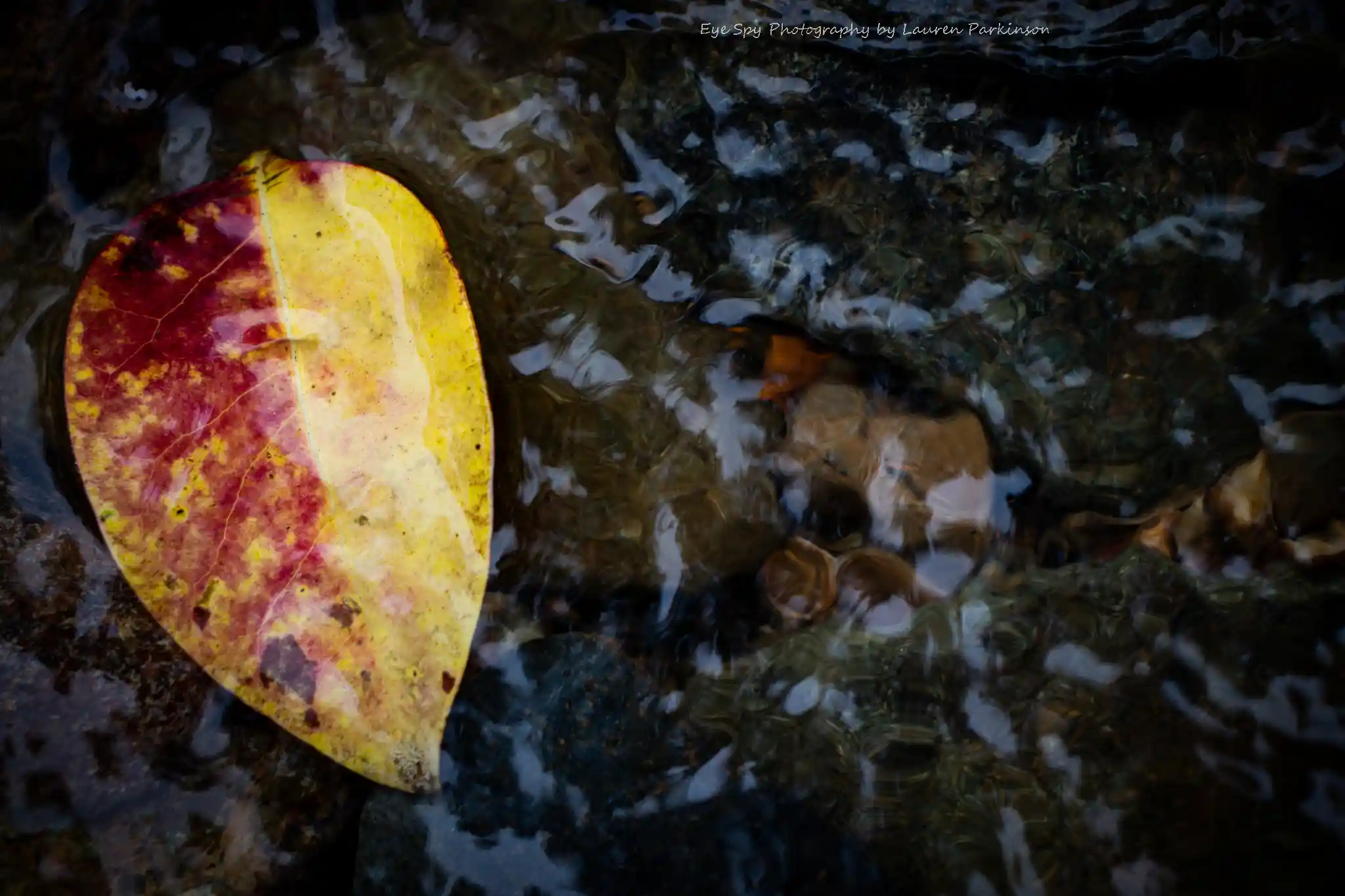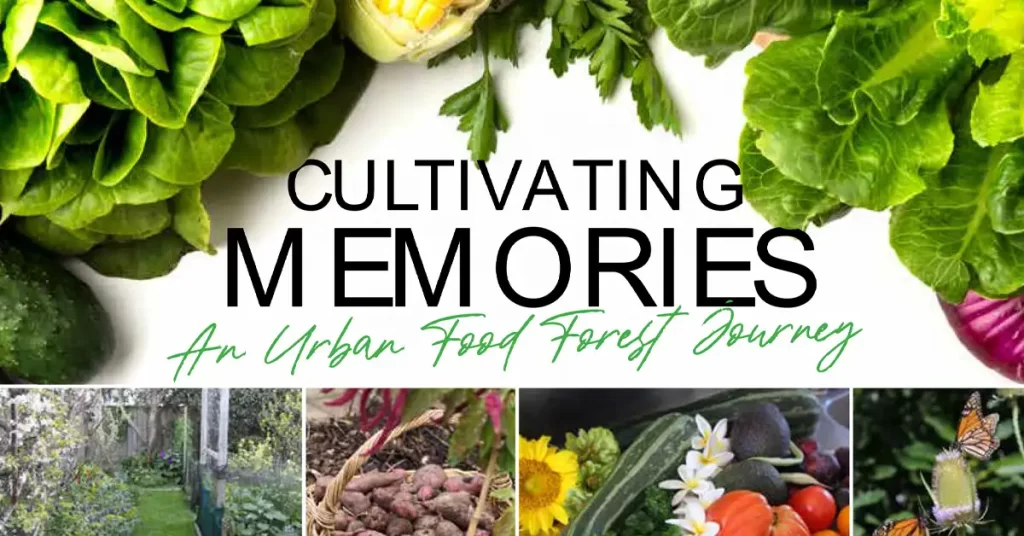
An Urban Food Forest Journey
Urban Food Forestry is not really a new concept, perhaps just a chic name for an old idea. When we were growing up, my grandparents grew large gardens and had many fruit trees. We would visit on the weekend and dig potatoes and top, tail and slice green beans thinly on the diagonal and shell fresh green peas for the family Sunday roast dinner. Perhaps the nostalgia of those happy memories is what drew me to providing fresh organic fruit and vegetables for my family, as well as good economics. I think my green fingers were possibly part of my DNA, along with the love of roses, passed along through the generations much like heirloom seeds – many of which I have been growing since I was an art student many moons ago.
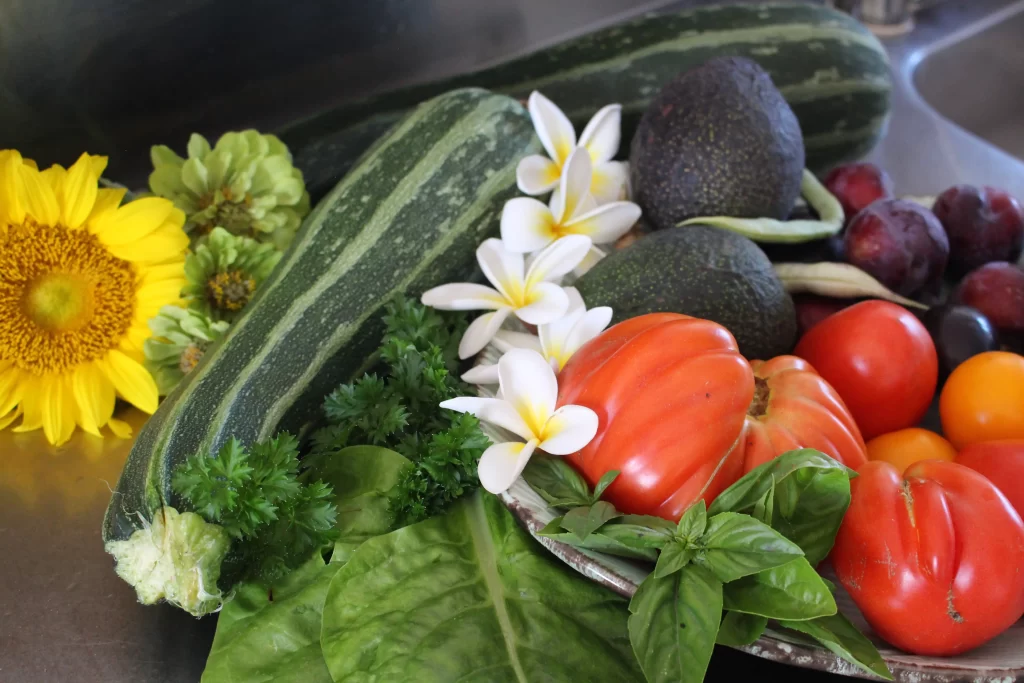
I have a vivid memory of my Nana and Poppa’s neighbour’s large corner section in Otaki. I befriended her granddaughter or perhaps it was the garden. I would go visit at every opportunity: the sprawling scented pineapple sage, the mint, multitude of flowers now a blur, the old unkempt fruit trees all a mass of loose interplanting spilling out over paths, no lawn just a wilderness of plants. Paradise through the little wooden gate that would inspire in me a lifelong love of planting.
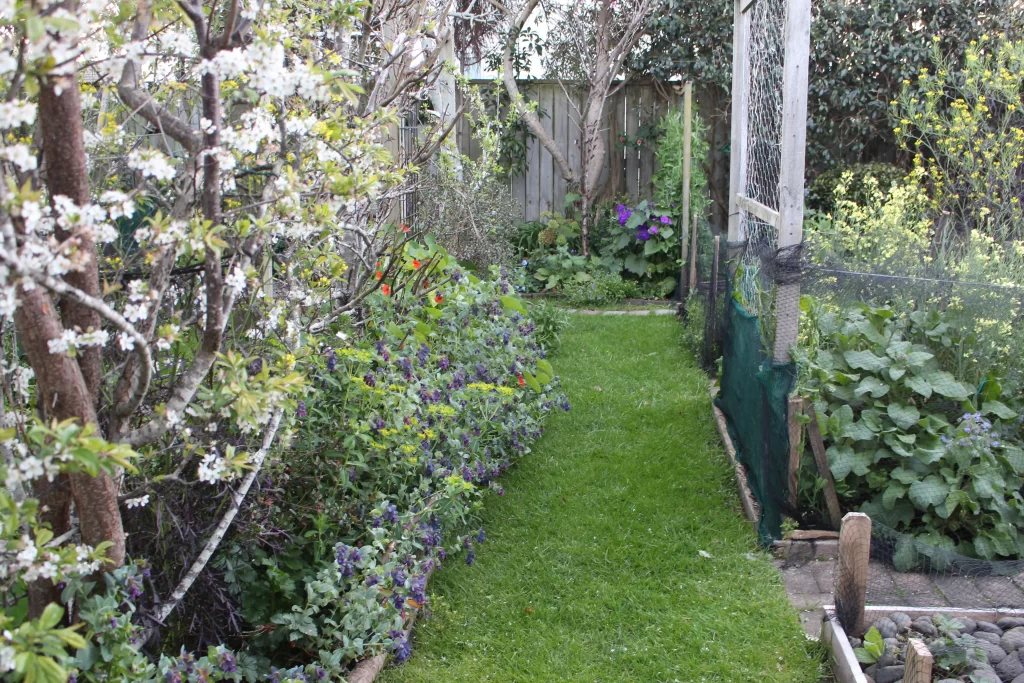
I have always been a creator of gardens among many of my artistic pursuits. For years I would move my garden around in pots and save seed for the next season. So I pretty much had an instant garden, five trailer loads of plants and boxes of seed, ready to go in the ground when we arrived at our current address.
Equipped with our trusty garden hose, we set about creating what would be the bones of the garden we have today. By planting our SW boundary first with edible evergreens such as olives, avocados, guavas, feijoa and citrus, this helped to slow the prevailing winds, creating a micro climate, which will help you grow almost any tropical fruit you like here on the Coromandel.

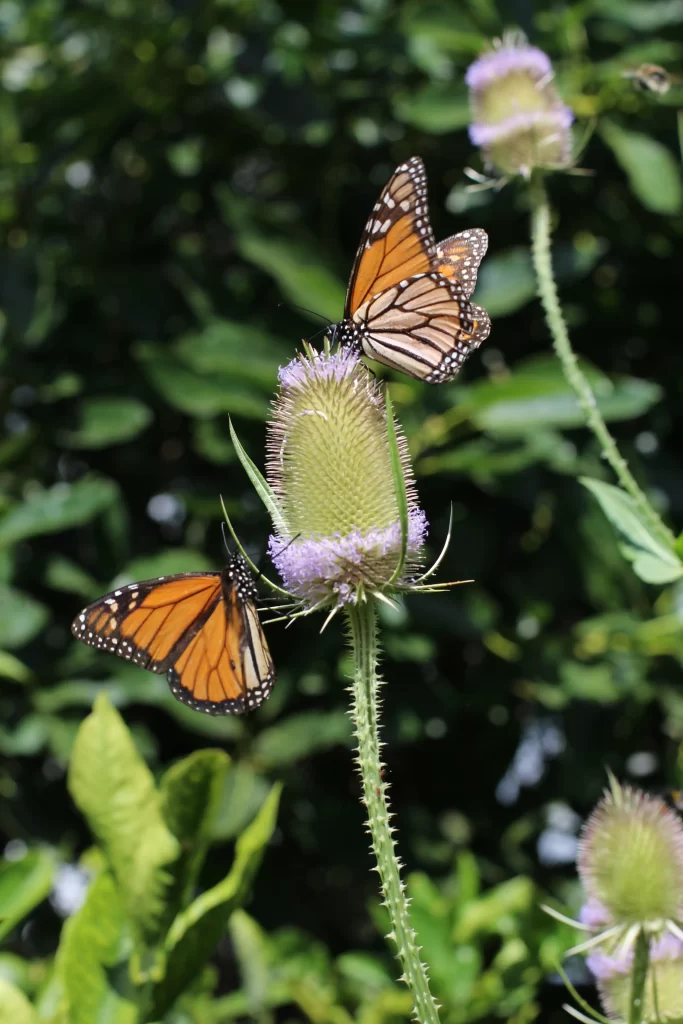
Next, plant deciduous fruiting trees along your more northern boundary. They can provide shade in summer and let much needed light in during winter. Espaliering these means you can cram more in a small space. Also, pruning to a reasonable height keeps them more manageable. I prune on a waning moon while the sap is not running; it also keeps you in a good routine of little and often.
Layers upon layers of plants, tallest to smallest and interplanted in between. Mix it up, flowers and herbal leys through your veggies and fruit trees attract and provide fodder for pollinators.
Compost is the true magic that keeps our garden healthy, not the store bought stuff that is often contaminated with Glyphosate or other nasty chemicals. We have two untreated wood bales and one of wire. A place to pile up sticks next to it for when you are too busy to layer. And of course my little workers, without which the decomposition wouldn’t be as productive: my tiger worm family which somehow made it their home. I pick out handfuls of their concentrated wriggly masses and chuck them back into the fresh compost that is still being worked, before too many of them get forked out around the property.

I use cover crops of watercress and mustards and let chickweed run rampant, to cover and protect the soil during winter. Soil health is key, we never use chemicals; what you put on or feed your soil ends up in the cycle somewhere, so it will eventually end up in you. Instead compost, seaweed, comfrey, wood ash and sheep pellets are among some of the alternatives.
We loosely use organic, permaculture, syntropic and lunar principles and it works for us. It is certainly not easy having your own food forest but it does pay off when you can go pick a basket full of fresh fruit and vegetables. It’s not free and certainly has cost time and money, but you know what is in it and that it’s full of nourishment.That is rewarding. Now we have our own paradise through the garden gate to enjoy.

Jude’s Mahi Toi Garden Studio will be open for the Lions Club “Garden Ramble” on the 4th and 5th of November. All proceeds to Project Mammogram.
Help us take Coromind Magazine to new heights by becoming a member. Click here






